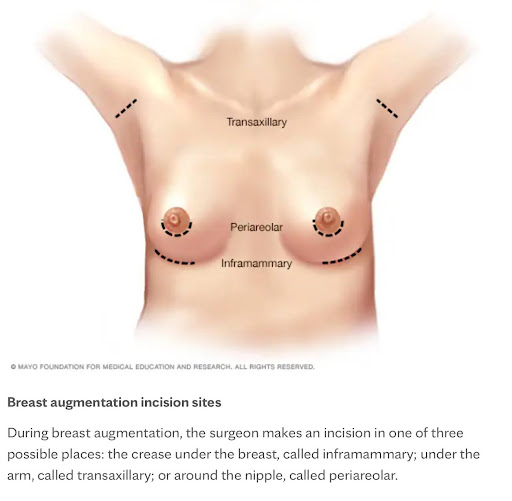Breast augmentation refers to procedures that aim to change the size or fullness of the breasts, or enhance their shape. From reconstruction after illness or accidents to aesthetics, there are many reasons why one would consider breast augmentation. It is important to be aware of the many methods available, and the considerations involved in each of them, to make an informed choice.
Let’s take a closer look at some common methods and considerations:

Some Methods of Breast Augmentation
- Saline Implants: They have a silicone outer shell filled with sterile saline solution. They can be pre-filled, or filled after the shell is surgically inserted. In case of a leak, the shell collapses and the saline solution is naturally expelled by the body.
- Silicone Implants: They have a silicone outer shell (smooth or textured) that is filled with silicone gel. Require regular visits to the surgeon to check their functioning. Form stable silicone implants (a.k.a. gummy bear implants) retain their shape even after a rupture due to thicker gel consistency.
- (Read more about breast implants here)
- Fat Transfer: Liposuction is used to take fat from other parts of the body, which is then purified and injected into the breasts. The change, however, is not as drastic as implants.
- Breast Lift: Incisions are made to remove excess skin and fat to tighten breast tissue and make the breasts look lifted.
- Dermal Fillers: fillers containing substances like hyaluronic acid are injected into the breasts to add volume. They may last for several months, and do not lead to a significant increase in size.
Which Procedure is the Best?
This will depend on individual needs and expectations.
Breast reconstruction after a mastectomy (breast removal), an accident, or gender-affirming surgery, may only be possible with implants.
For those who do not want a significant increase, fat transfer could be a better option. A breast lift may be suitable for those who would want a raised look post-weight loss or pregnancy.
What Are The Risks?
There are several risks associated with breast augmentation procedures:
- Rupture of implants
- Infections
- Breast implants illness
- Changes in breast sensitivity
- Breast Implant-Associated Anaplastic Large Cell Lymphoma (BIA-ALCL): slow-growing cancer, associated with textured implants.
What are Some Other Considerations?
- Realistic expectations: Have realistic expectations for results and how long they will last.
- Reason for Augmentation: Consider consulting a surgeon and mental health professional to assess reasons for seeking augmentation, and whether it is what you really need.
- Future Breastfeeding: Subglandular implants, incisions around the areola, and surgery that affects milk ducts (like breast lift), could lead to inadequate lactation.
- Finances: Consider whether the procedure is covered by insurance; also factor in the cost of maintenance.
- Maintenance: Implants require regular screening to check functioning; additional surgery may also be required to correct positioning. Fat transfer and fillers may require repetition of the procedure to maintain results.

Concluding Thoughts
Breast augmentation can be sought for several reasons – reconstruction, gender affirmation, or aesthetics. Whatever the reason may be, it is important to be aware of available procedures, and their risks and considerations to make an informed and safe choice.
Author



